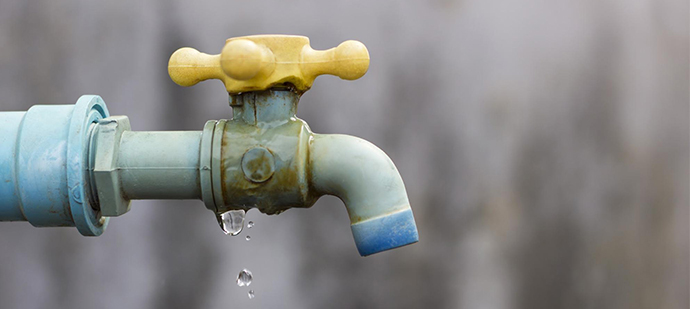How to Examine If Your Residence Has a Covert Leakage
How to Examine If Your Residence Has a Covert Leakage
Blog Article
What are your thoughts on Top leak detection hacks?

Early detection of leaking water lines can reduce a prospective calamity. Some little water leaks may not be visible.
1. Analyze the Water Meter
Examining it is a guaranteed method that helps you uncover leakages. If it relocates, that suggests a fast-moving leak. This implies you may have a slow-moving leakage that might even be below ground.
2. Examine Water Usage
Examine your water expenses and track your water intake. As the one paying it, you must notice if there are any kind of disparities. If you find sudden changes, despite your intake coinciding, it indicates that you have leaks in your plumbing system. Bear in mind, your water expense should drop under the same array monthly. A sudden spike in your costs suggests a fast-moving leakage.
At the same time, a constant increase each month, despite the exact same practices, reveals you have a slow leakage that's additionally slowly rising. Call a plumber to thoroughly inspect your residential or commercial property, specifically if you feel a warm location on your flooring with piping underneath.
3. Do a Food Coloring Test
When it comes to water consumption, 30% comes from bathrooms. If the color in some way infiltrates your dish throughout that time without flushing, there's a leakage in between the tank as well as bowl.
4. Asses Exterior Lines
Don't forget to inspect your outdoor water lines too. Needs to water seep out of the link, you have a loosened rubber gasket. One little leak can throw away loads of water and spike your water costs.
5. Examine the circumstance and evaluate
Home owners must make it a practice to check under the sink counters and also even inside closets for any bad odor or mold and mildew development. These two warnings indicate a leakage so prompt focus is needed. Doing routine examinations, even bi-annually, can save you from a major problem.
Examine for stainings and also weakening as many pipes and home appliances have a life span. If you think leaking water lines in your plumbing system, don't wait for it to rise.
Early discovery of dripping water lines can mitigate a prospective catastrophe. Some small water leakages may not be visible. Inspecting it is a guaranteed means that aids you uncover leaks. One tiny leak can throw away tons of water and spike your water bill.
If you think leaking water lines in your plumbing system, don't wait for it to escalate.
5 Signs that Your Home Has a Hidden Leak
Your water bill is unusually high without explanation
Generally, your water bill tends to stay consistent throughout the year as long as the same number of people live in your household year round. The bill might be higher during certain times of the year, such as summer, when your lawn may require more watering than it does in cooler months. However, if you notice a rise in your water bill that you can’t explain, it’s an indicator that there’s a hidden leak somewhere in your home.
You hear running water
One of the biggest signs that you have a water leak is the sound of rushing water when no plumbing fixtures are on and when no water-using appliances are running. If you hear running water in your walls when no water is being used anywhere in your home, locate your home’s main water shut-off valve, shut off your water supply, and contact a plumber at once.
Your home smells musty
Hidden leaks often occur in dark spaces, such as behind walls or under carpeting. Incidentally, darkness and moisture can create an ideal breeding environment for mold or mildew. If you start to smell mildew or the scent of rotting wood or stagnant water around your home, it’s a fair bet that a leak is the culprit.
You find wet spots around your home
The wet spots usually show up as moist areas in your carpeting. If your home has a basement level, puddles on the floor could indicate a slab leak. Outside, unexplainable puddles or lush, green patches in your yard often mean that there’s a leak in your sewer line or main water line.
You have stains, bubbles, or condensation on your walls/ceiling
Stains or condensation on your walls or ceiling are both major signs of a hidden leak. Also, drywall (AKA. sheetrock) is very absorbent, and as it takes on more water from a leak behind a wall, it will start to bubble, swell, or warp. If you see this happening in your home, don’t wait to contact a plumber before the water damage spreads.
https://www.ezflowplumbingaz.com/blog/2019/june/5-signs-that-your-home-has-a-hidden-leak/

As a fervent reader on Leaking water lines, I imagined sharing that piece of content was a good idea. Enjoyed reading our piece of writing? Please share it. Let other people discover it. Bless you for your time. Come back soon.
Report this page